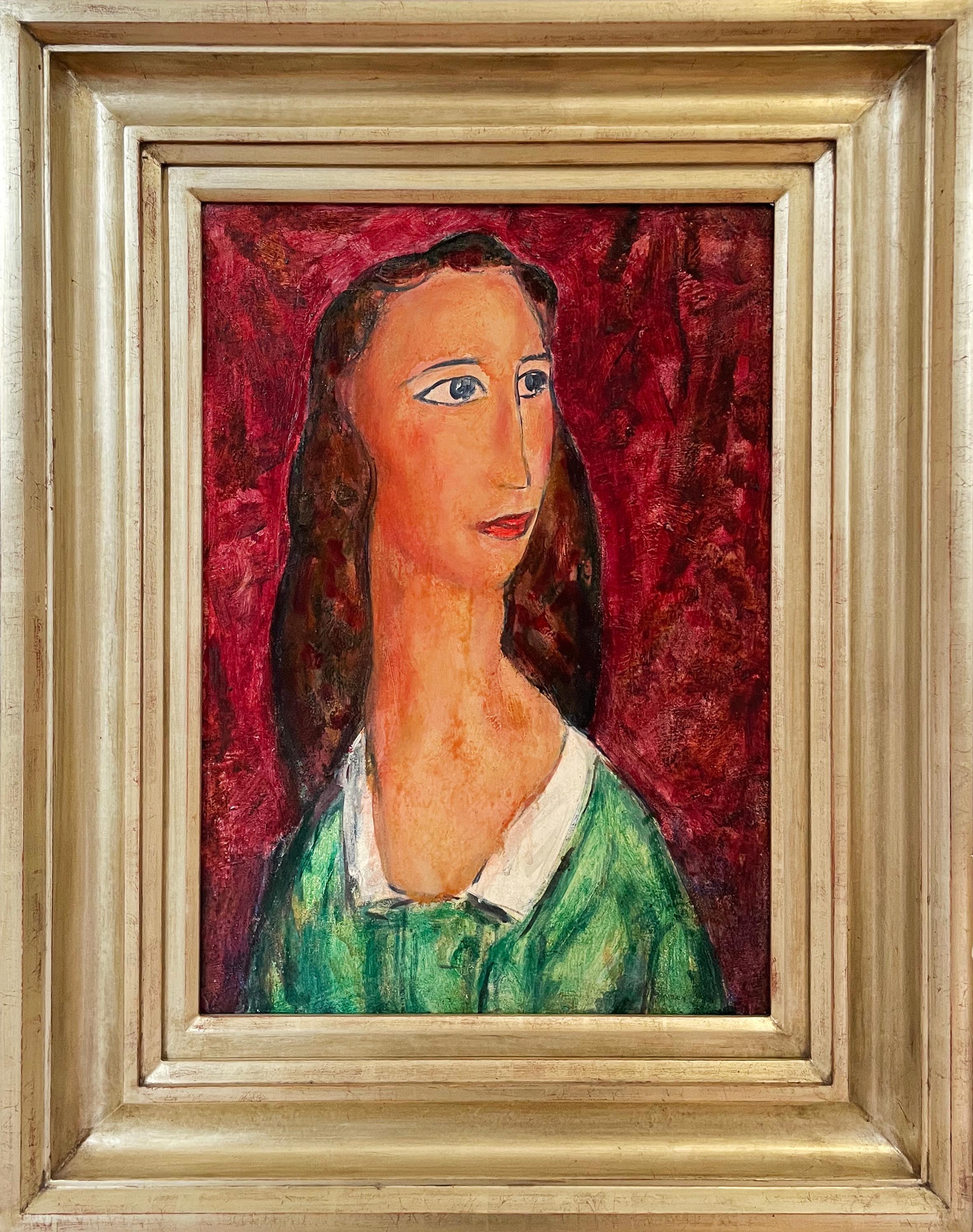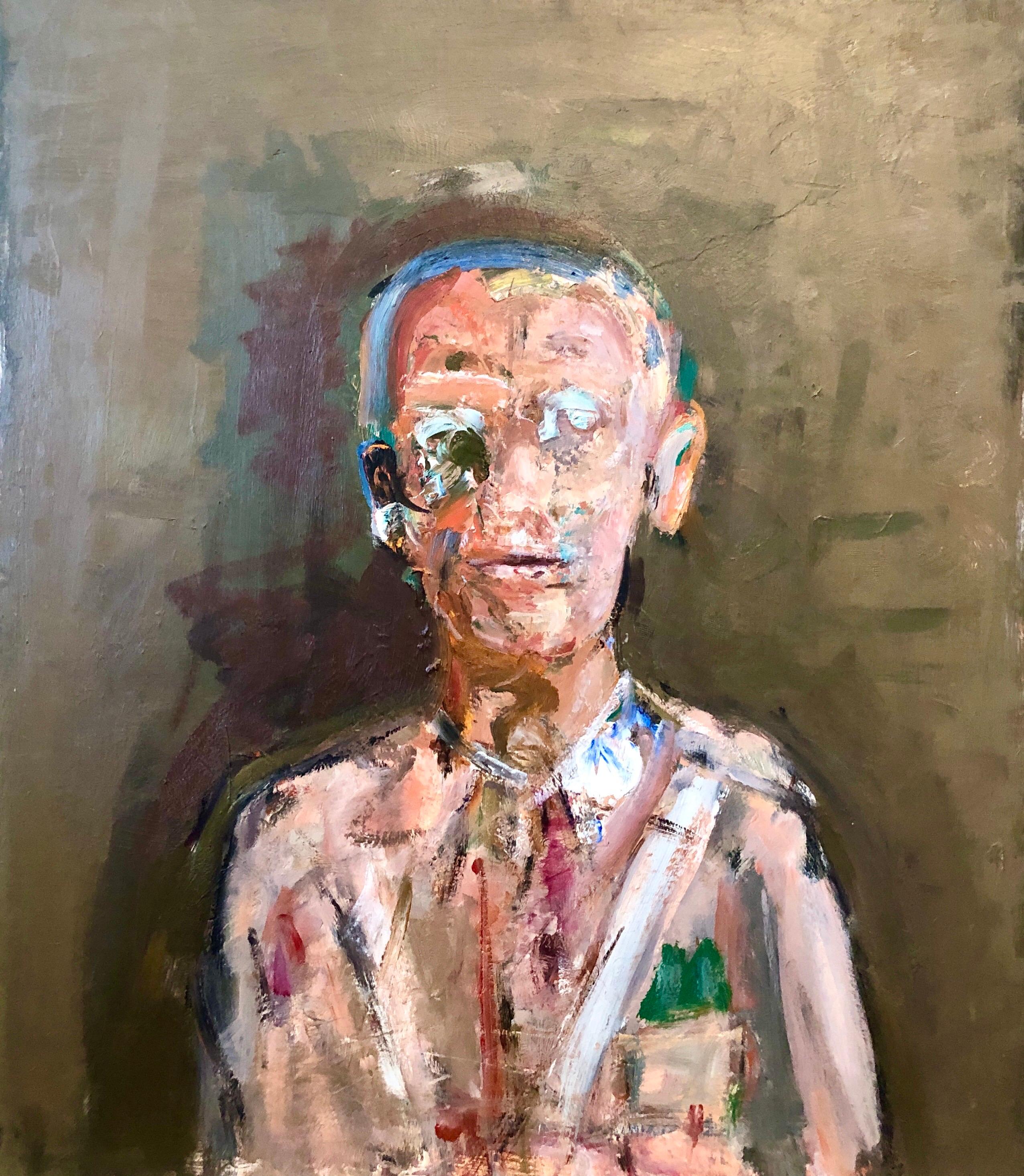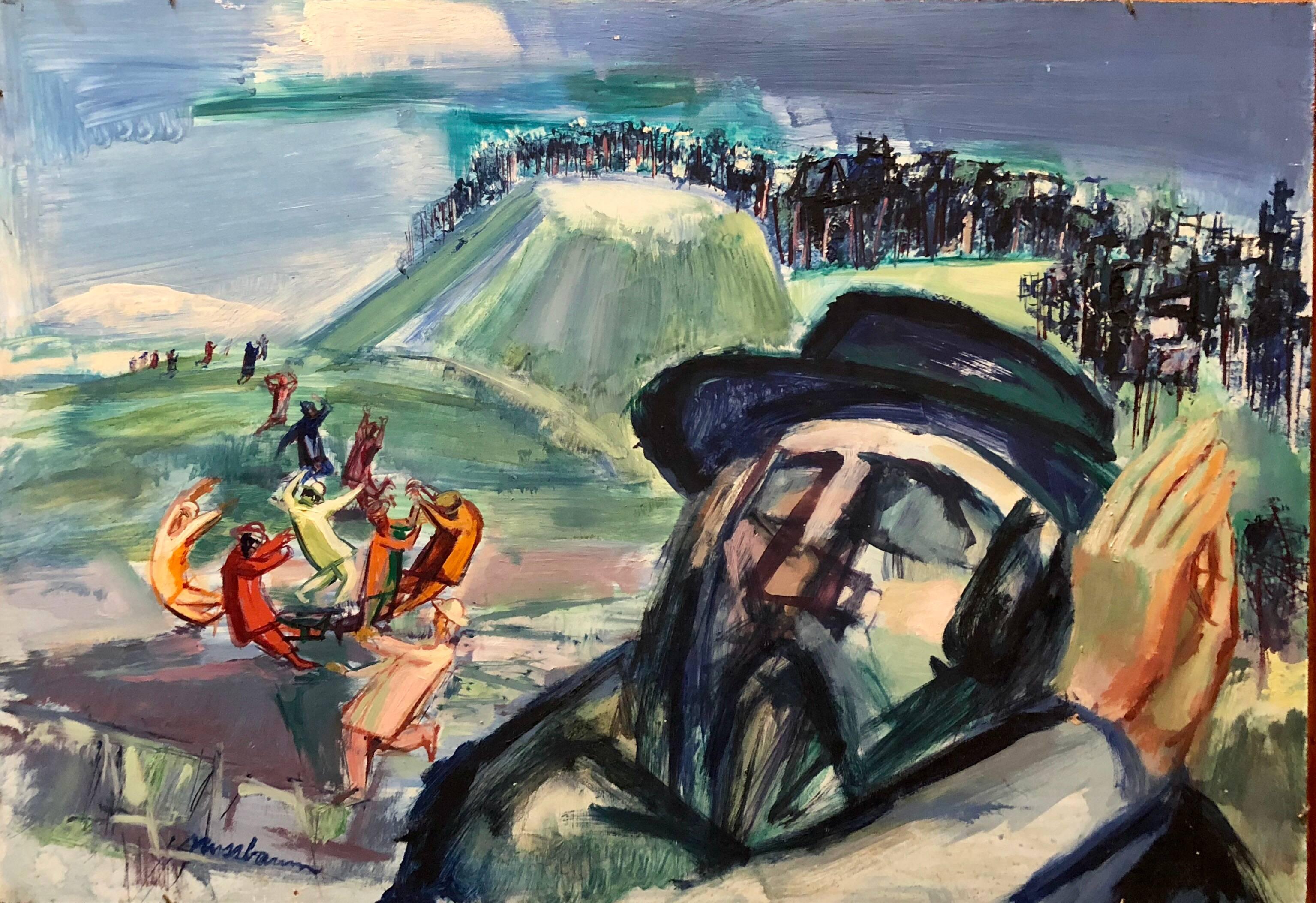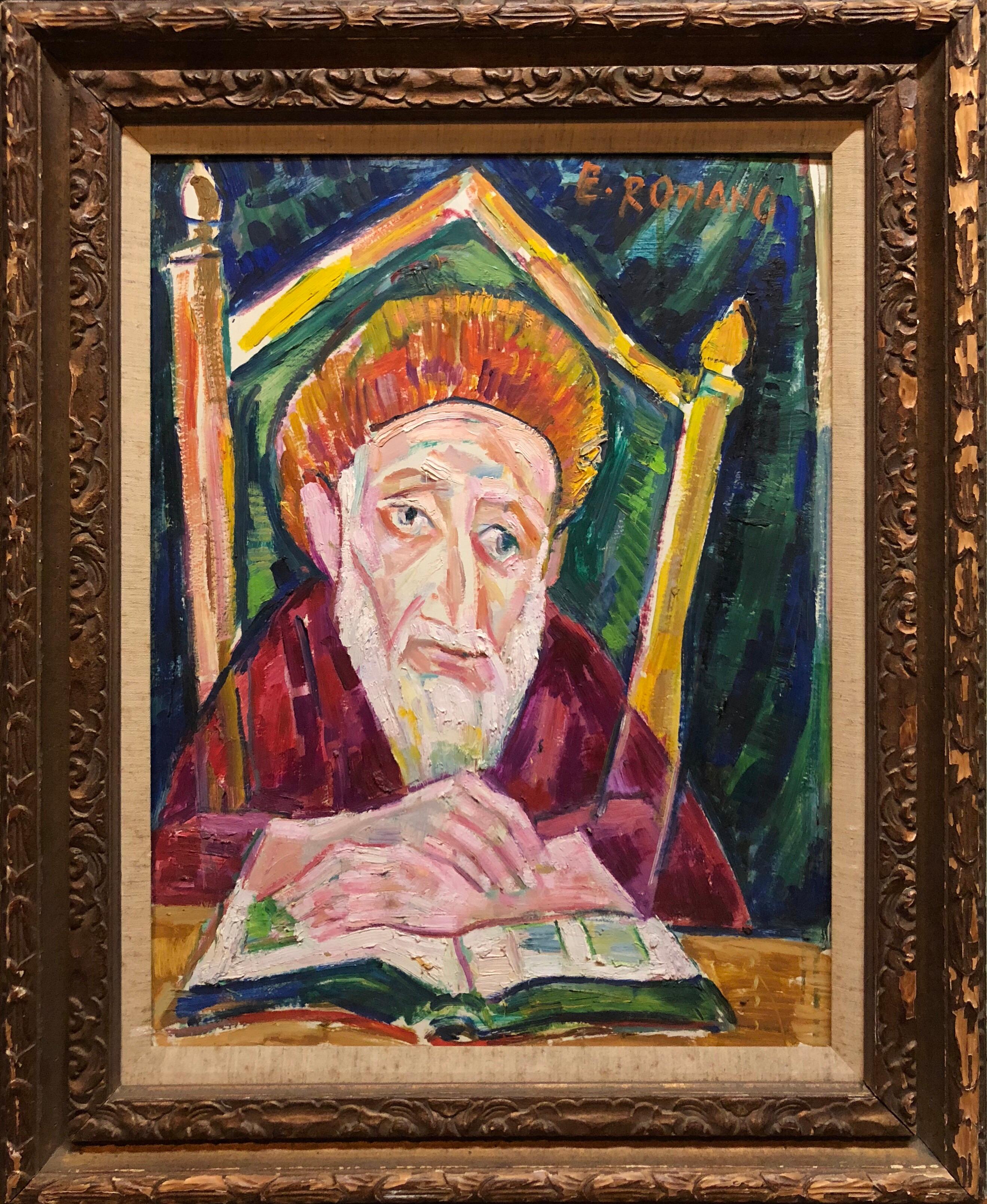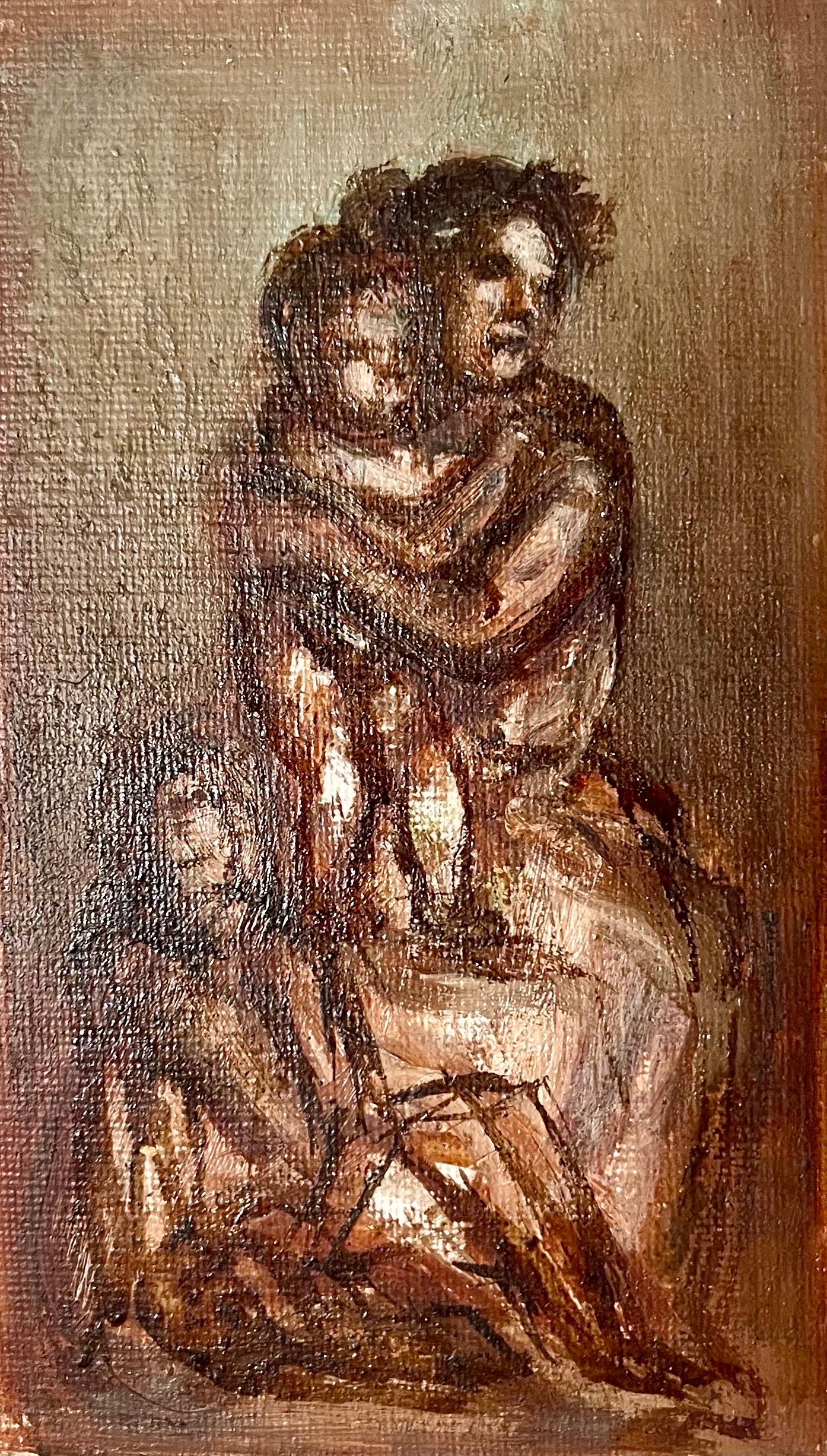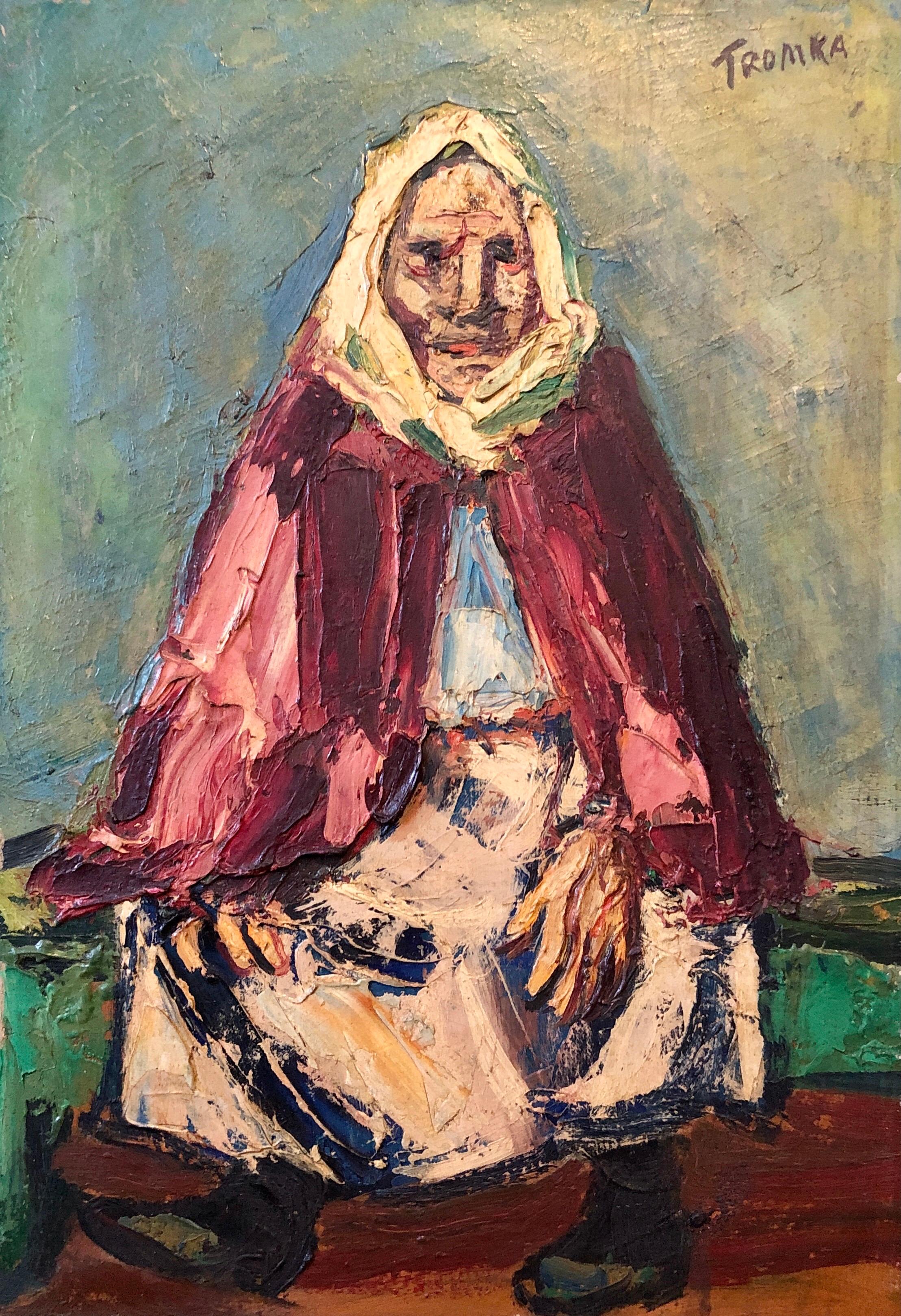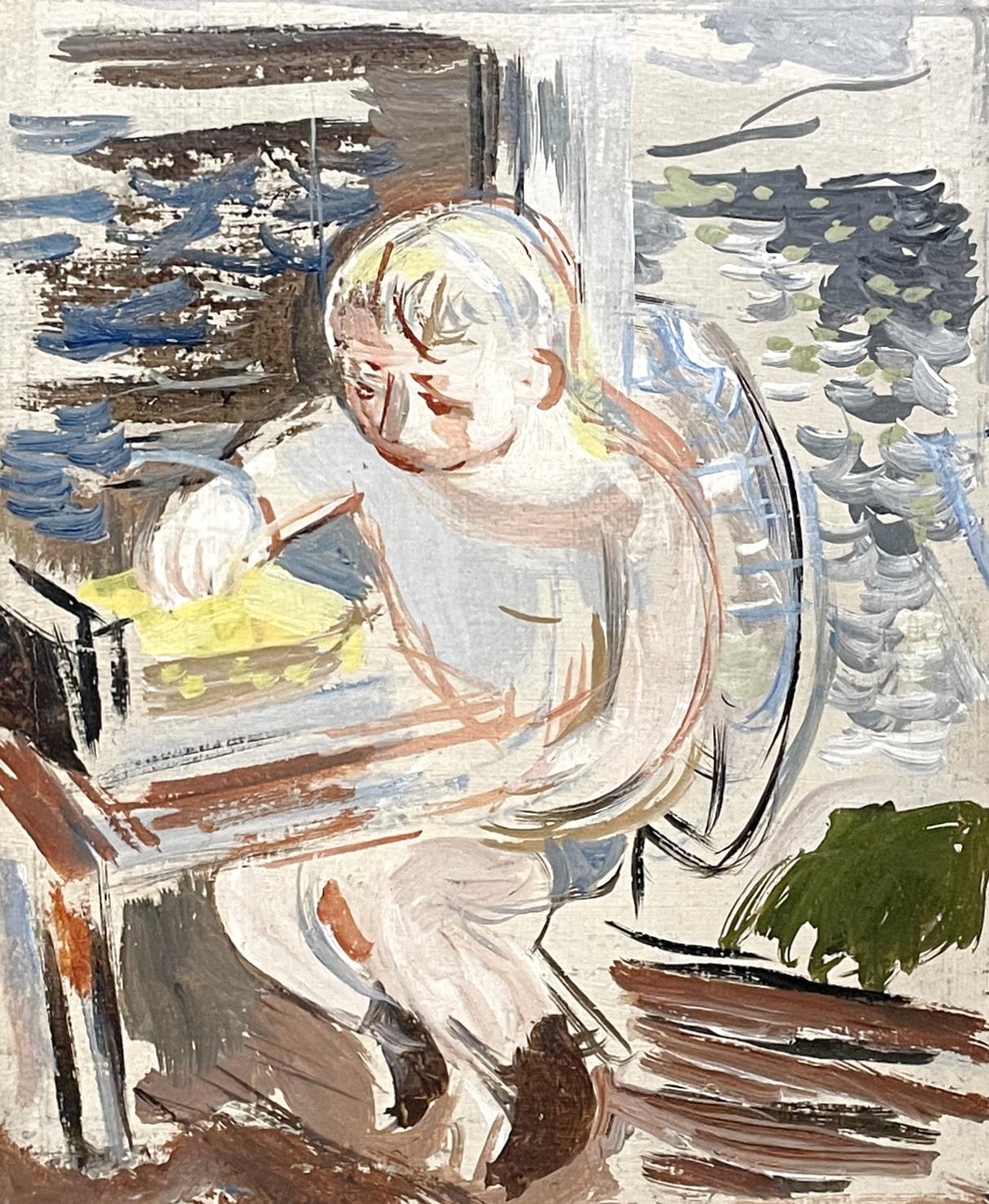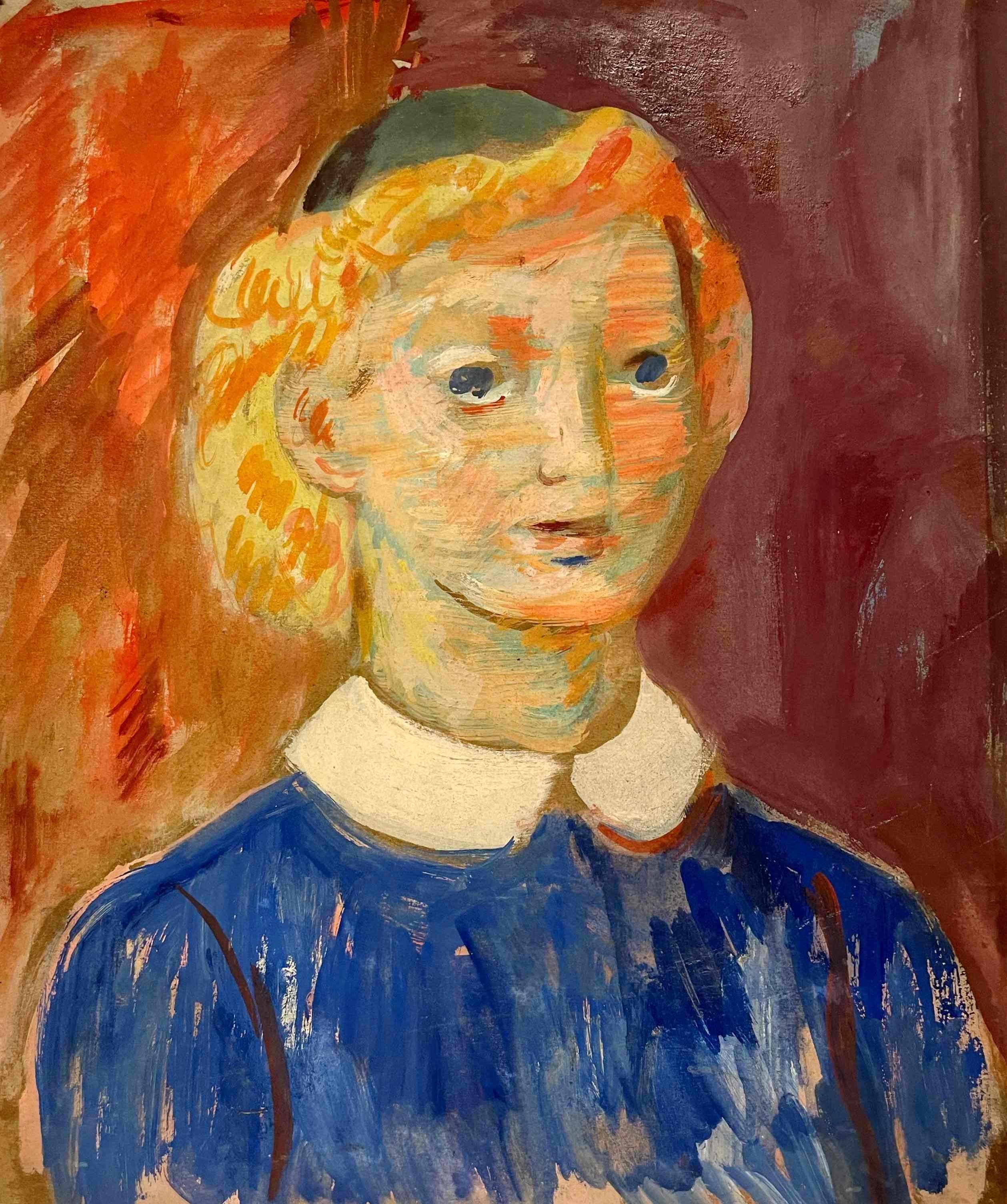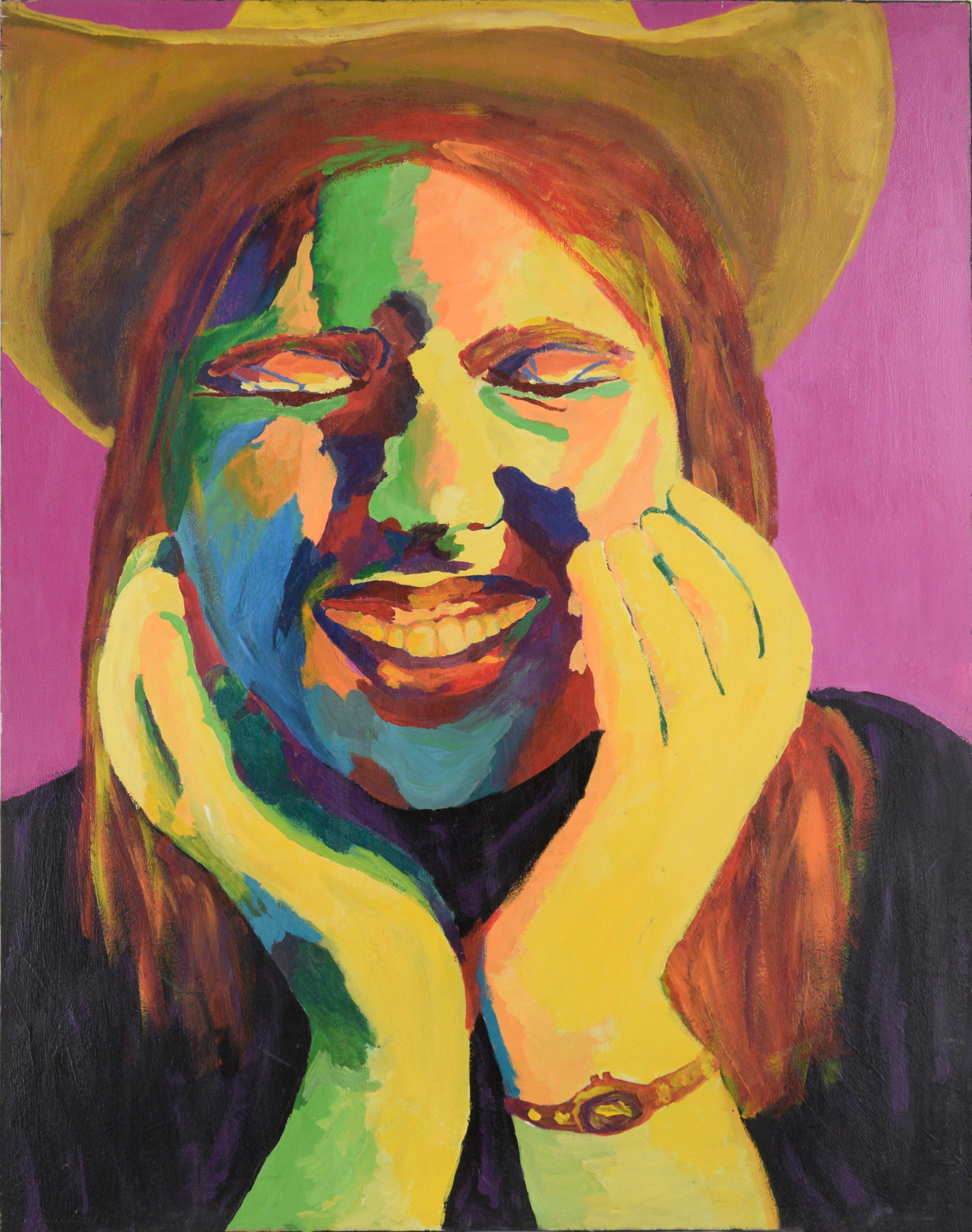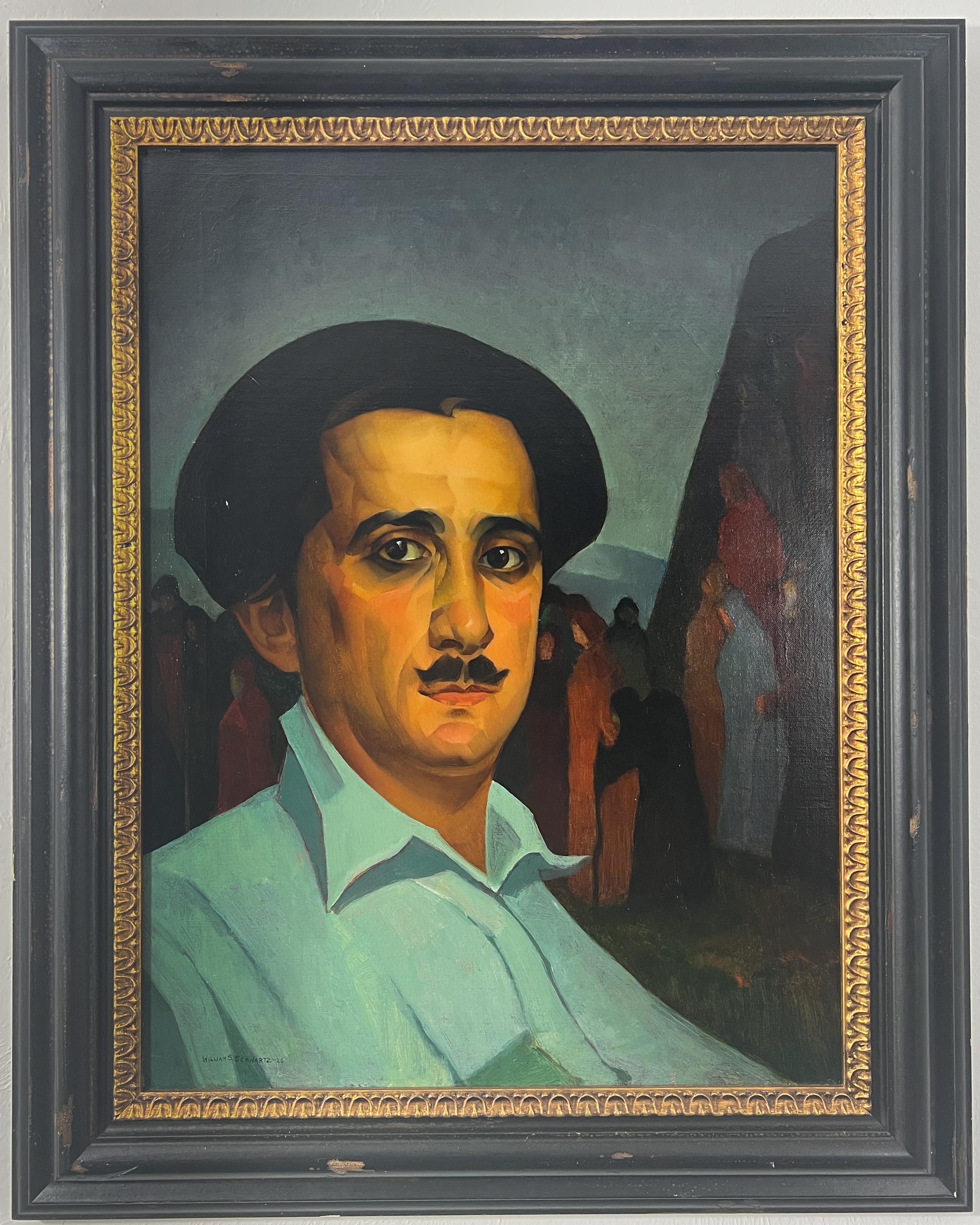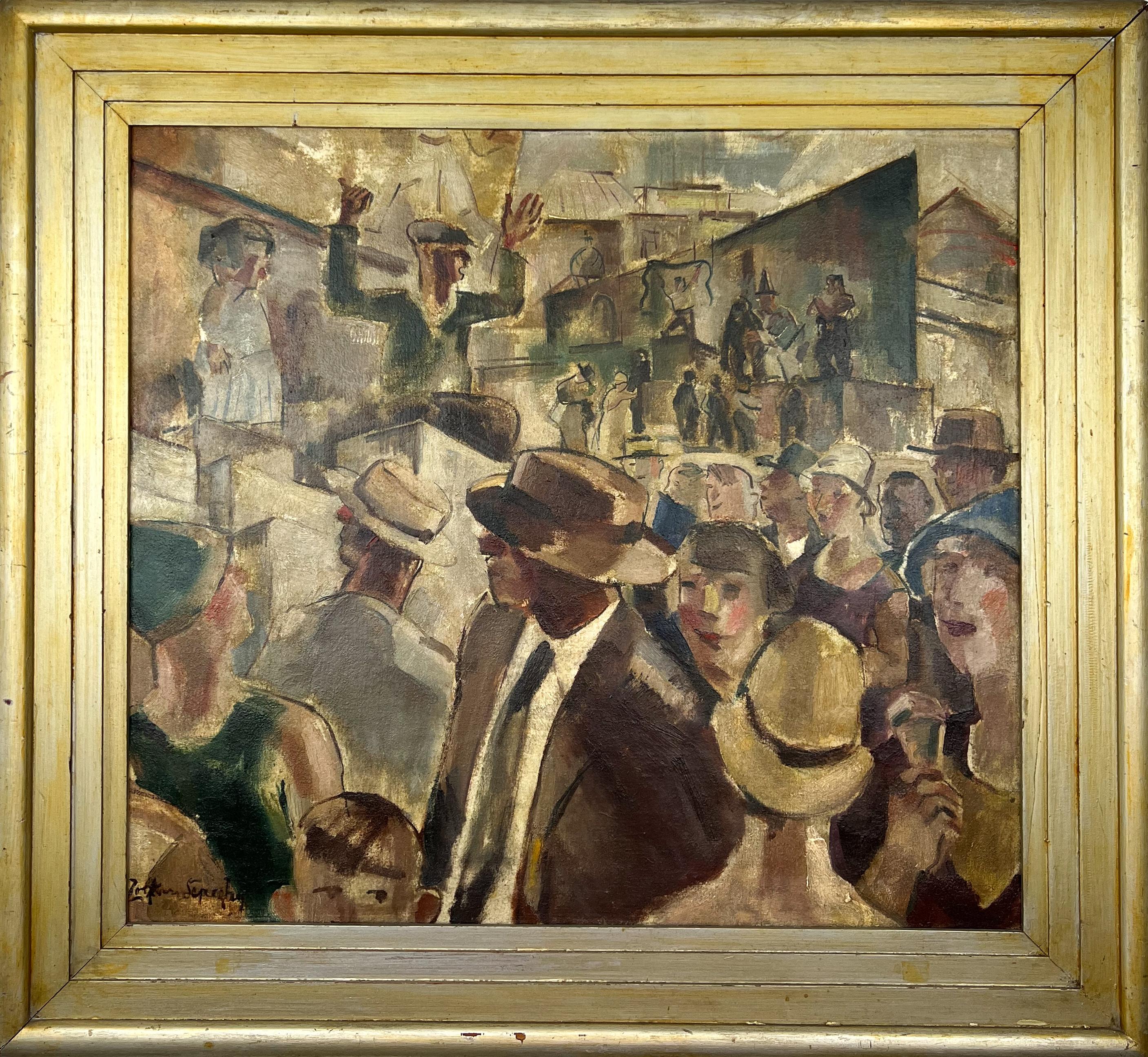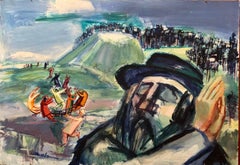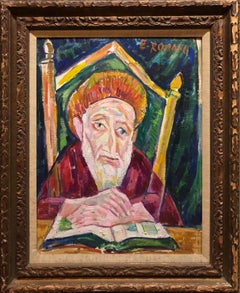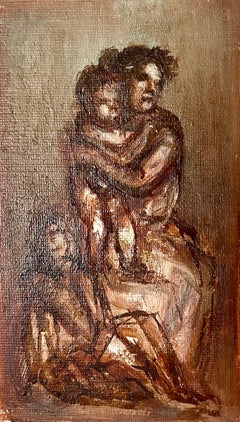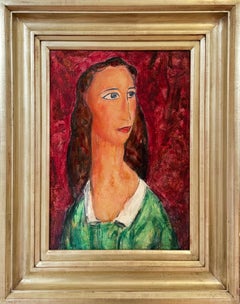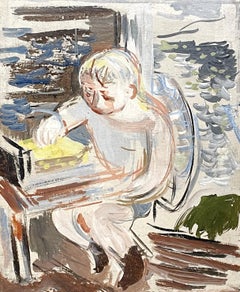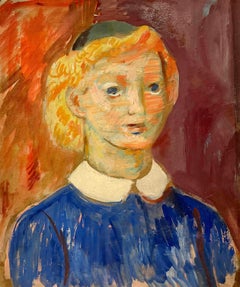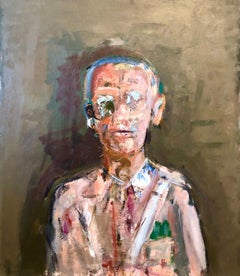
Military Man Portrait Figurative Abstract Oil Painting American Modernist Artist
Want more images or videos?
Request additional images or videos from the seller
1 of 18
Dean RichardsonMilitary Man Portrait Figurative Abstract Oil Painting American Modernist Artist1978
1978
$3,000List Price
About the Item
- Creator:Dean Richardson (1931)
- Creation Year:1978
- Dimensions:Height: 23.25 in (59.06 cm)Width: 20.63 in (52.41 cm)
- Medium:
- Movement & Style:
- Period:
- Condition:good. frame has light wear.
- Gallery Location:Surfside, FL
- Reference Number:1stDibs: LU3826572602
About the Seller
4.9
Platinum Seller
Premium sellers with a 4.7+ rating and 24-hour response times
Established in 1995
1stDibs seller since 2014
1,780 sales on 1stDibs
Authenticity Guarantee
In the unlikely event there’s an issue with an item’s authenticity, contact us within 1 year for a full refund. DetailsMoney-Back Guarantee
If your item is not as described, is damaged in transit, or does not arrive, contact us within 7 days for a full refund. Details24-Hour Cancellation
You have a 24-hour grace period in which to reconsider your purchase, with no questions asked.Vetted Professional Sellers
Our world-class sellers must adhere to strict standards for service and quality, maintaining the integrity of our listings.Price-Match Guarantee
If you find that a seller listed the same item for a lower price elsewhere, we’ll match it.Trusted Global Delivery
Our best-in-class carrier network provides specialized shipping options worldwide, including custom delivery.More From This Seller
View AllMilitary Man Portrait Figurative Abstract Oil Painting American Modernist Artist
By Dean Richardson
Located in Surfside, FL
Oil on board, 1978. It depicts an abstracted portrait of a military man in an army uniform with medals. It is signed by the artist verso.
Dimensions: sight size-22 inches tall X 19...
Category
1970s American Modern Figurative Paintings
Materials
Oil, Board
Modernist American Judaica Painting Gaon and his Disciples
By Ervin B. Nussbaum
Located in Surfside, FL
In this painting, Nussbaum portrays a Rabbi, or Rebbe outside the synagogue The vibrant colors used in this painting seem to overlay each other without being previous mixed.
Ervin B...
Category
20th Century American Modern Figurative Paintings
Materials
Oil, Board
Modernist Oil Painting 1940s, Judaica Hasidic Rabbi in Jerusalem
By Emanuel Glicenstein Romano
Located in Surfside, FL
Genre: Portrait
Subject: Landscape
Medium: Oil
Surface: Board
Country: United States
EMANUEL ROMANO
Rome, Italy, b. 1897, d. 1984
Emanuel Glicenstein Romano was born in Rome, September 23, 1897.
His father Henryk Glicenstein was a sculptor and was living in Rome with his wife Helena (born Hirszenberg) when Emanuel was born. His father obtained Italian citizenship and adopted the name Enrico. Emanuel was brought up in Italy, Switzerland, Germany, England and Poland.
In 1926 Emanuel and his father sailed for New York. They briefly visited Chicago. Romano's sister, Beatrice, and mother only joined them in New York years later.
Romano changed his name on his arrival to America and some have erroneously speculated that this was to avoid antisemitic discrimination. In truth, as the son of a highly-regarded artist, Romano changed his name to ensure that any success or recognition he would later attain, would be the result of nothing other than his own merit as an artist, and not on account of his father's fame.
In 1936 Romano was worked for the Federal Art Project creating murals. During and immediately after World War II, Romano created a series of allegorical works depicting graphic holocaust images that were held closely by the family until after his passing. One of these works is now on permanent display in the Florida Holocaust Museum in St. Petersburg Florida.
Emanuel's father died in 1942 in a car accident before they could realize their shared dream of visiting Israel.
In 1944 Romano, having completed his degree at the Pennsylvania Academy of Fine Arts and the Art Institute of Chicago, began teaching at the City College of New York.
Romano moved to Safed, Israel in 1953 and established an art museum in his father's memory, the Glicentein Museum.
COLLECTIONS
Indianapolis Museum of Art
Metropolitan Museum of Art
Boston Fine Arts Museum
Fogg Museum
Musée Nacional de France
Recently his work has been added to the Florida Holocaust Museum collection. His notable works include his holocaust themed allegorical paintings as well as portraits of Marianne Moore, his father and William Carlos Williams...
Category
1970s American Modern Figurative Paintings
Materials
Oil, Board
Simka Simkhovitch WPA Artist Oil Painting Family Mother, Kids American Modernist
By Simka Simkhovitch
Located in Surfside, FL
Simka Simkhovitch (Russian/American 1893 - 1949)
This came with a small grouping from the artist's family, some were hand signed some were not.
These were studies for larger paintings.
Simka Simkhovitch (Симха Файбусович Симхович) (aka Simka Faibusovich Simkhovich) (Novozybkov, Russia May 21, 1885 O.S./June 2, 1885 N.S.—Greenwich, Connecticut February 25, 1949) was a Ukrainian-Russian Jewish artist and immigrant to the United States. He painted theater scenery in his early career and then had several showings in galleries in New York City. Winning Works Progress Administration (WPA) commissions in the 1930s, he completed murals for the post offices in Jackson, Mississippi and Beaufort, North Carolina. His works are in the permanent collections of the Dallas Museum of Art, the National Museum of American Art and the Whitney Museum of American Art. Born outside Kyiv (Petrograd Ukraine) into a Jewish family who owned a small department store. During a severe case of measles when he was seven, Simcha Simchovitch sketched the views outside his window and decided to become an artist, over his father's objections. Beginning in 1905, he studied at the Grekov Odessa Art School and upon completion of his studies in 1911 received a recommendation to be admitted to the Imperial Academy of Arts. Though he enrolled to begin classes in architecture, painting, and sculpture at the Imperial Academy, he was dropped from the school roster in December because of the quota on the number of Jewish students and drafted into the army. Simchovitch served as a private in the 175th Infantry Regiment Baturyn [ru] until his demobilization in 1912. Re-enrolling in the Imperial Academy, he audited classes.
Simka Simkhovitch exhibited paintings and sculptures in 1918 as part of an exhibition of Jewish artists and in 1919 placed 1st in the competition "The Great Russian Revolution" with a painting called "Russian Revolution" which was hung in the State Museum of Revolution. In 1922, Simkha Simkhovitch exhibited at the International Book Fair in Florence (Italian: Fiera Internazionale del Libro di Firenze). In 1924, Simkhovitch came to the United States to make illustrations for Soviet textbooks and decided to immigrate instead. Initially he supported himself by doing commercial art and a few portrait commissions. In 1927, he was hired to paint a screen for a scene in the play "The Command to Love" by Fritz Gottwald and Rudolph Lothar which was playing at the Longacre Theatre on Broadway. Art dealers began clamoring for the screen and Simkhovitch began a career as a screen painter for the theater. Catching the attention of the screenwriter, Ernest Pascal, he worked as an illustrator for Pascal, who then introduced him to gallery owner, Marie Sterner. Simkhovitch's works appeared at the Marie Sterner Gallery beginning with a 1927 exhibit and were repeated the following year. Simkhovitch had an exhibit in 1929 at Sterner's on circus paintings. In 1931, he held a showing of works at the Helen Hackett Gallery, in New York City and later that same year he was one of the featured artists of a special exhibit in San Francisco at the California Palace of the Legion of Honor in Lincoln Park. The exhibit was coordinated by Marie Sterner and included four watercolors, including one titled "Nudes". He is of the generation of Russian Soviet artists such as Isaac Pailes, Serge Charchoune, Marc Chagall, Chana Orloff, Isaac Ilyich Levitan, and Ossip Zadkine.
In 1936, Simkhovitch was selected to complete the mural for the WPA Post office project in Jackson, Mississippi. The mural was hung in the post office and courthouse in 1938 depicted a plantation theme. Painted on the wall behind the judge’s bench, “Pursuits of Life in Mississippi”, a depiction of black workers engaged in manual labor amid scenes of white professionals and socialites, was eventually covered over in later years during renovations due to its stereotypical African American imagery. The following year, his painting "Holiday" won praise at an exhibition in Lincoln, Nebraska. In 1940, Simkhovitch's second WPA post office project was completed when four murals, "The Cape Lookout Lighthouse and the Orville W. Mail Boat", "The Wreck of the Crissie Wright", "Sand Ponies" and "Canada Geese" were installed in Beaufort, North Carolina. The works were commissioned in 1938 and did not generate the controversy that the Jackson mural had. The main mural is "The Wreck of the Crissie Wright" and depicts a shipwreck which had occurred in Beaufort in 1866. "The Cape Lookout Lighthouse and the Orville W. Mail Boat" depicted the lighthouse built in 1859 and the mail boat that was running mail during the time which Simkhovitch was there. The boat ran mail for the area until 1957. "Sand Ponies" shows the wild horses common to the North Carolina barrier islands and "Canada Geese" showed the importance of hunting and fishing in the area. All four murals were restored in the 1990s by Elisabeth Speight, daughter of two other WPA muralists, Francis Speight...
Category
1930s American Modern Figurative Paintings
Materials
Oil, Board
Rare Polish American 1930s Oil Painting Painting WPA Russian Babushka Jewish Art
By Abram Tromka
Located in Surfside, FL
Abram Tromka was born May 1, 1896 in Poland. At the age of seven he immigrated with his family to the United States, settling in New York City. It was on the boat coming to New York ...
Category
1930s American Modern Figurative Paintings
Materials
Oil, Board
Holocaust Memorial Oil Painting Judaica Rabbi Composed of Figures Artists Frame
By Maurice Newman
Located in Surfside, FL
Maurice Newman was active/lived in Massachusetts / Lithuania. Maurice Newman is known for sculpture-abstraction, impressionist landscape painting, diorama.
Born in Lithuania, Mauric...
Category
1960s American Modern Portrait Paintings
Materials
Oil
You May Also Like
America impressionist portrait young boy 1937 Modern Figurative Oil Painting
Located in Buffalo, NY
A fantastic modern portrait of a young boy. This work is signed what appears to be Paul Sellers and dated 1937, but we have not found information on the artist.
The work dated 1936...
Category
1930s American Modern Figurative Paintings
Materials
Oil, Board
An Ideal Head of a Woman
By Alfred Henry Maurer
Located in Greenwich, CT
In the tradition of Modigliani, Maurer's depictions of women are expressive and lively. America had very few modernists who painted in this manner but Maurer is famous for exactly t...
Category
1920s American Modern Figurative Paintings
Materials
Gesso, Oil, Board
A Delightful Painting of a Young Boy Sketching in a Boathouse by Francis Chapin
By Francis Chapin
Located in Chicago, IL
A Delightful Painting of a Young Boy Sketching in a Boathouse by Noted Chicago Modern Artist, Francis Chapin (Am. 1899-1965). Painted circa 1958 at the artist's summer house and st...
Category
Mid-20th Century American Modern Figurative Paintings
Materials
Oil, Board
An Introspective 1930s Modern Portrait, "Acolyte" by Noted Artist Francis Chapin
By Francis Chapin
Located in Chicago, IL
An Introspective 1930s Modern Portrait, "Acolyte" by Noted Chicago Artist, Francis Chapin (Am. 1899-1965). Dry watercolor on board. Artwork size: 15” x 12” (Framed size: 18 3/4” ...
Category
1930s American Modern Figurative Paintings
Materials
Watercolor, Board
Laughing Woman
Located in Soquel, CA
Vibrant portrait of a laughing woman by Chelsea Frost. Executed in a fauvist style, this piece is bright and highly saturated. The woman is framed very ...
Category
21st Century and Contemporary American Modern Figurative Paintings
Materials
Acrylic, Fiberboard
$1,080 Sale Price
20% Off
Side Show Barker - Original Modernist American Fair Scene Oil Painting
Located in Marco Island, FL
From the Michael Hall Collection, this is a great American scene showing the excitement of the fair. It depicts a time when men wore coats and ties and women had hats at the fair be...
Category
1930s American Modern Figurative Paintings
Materials
Canvas, Oil
